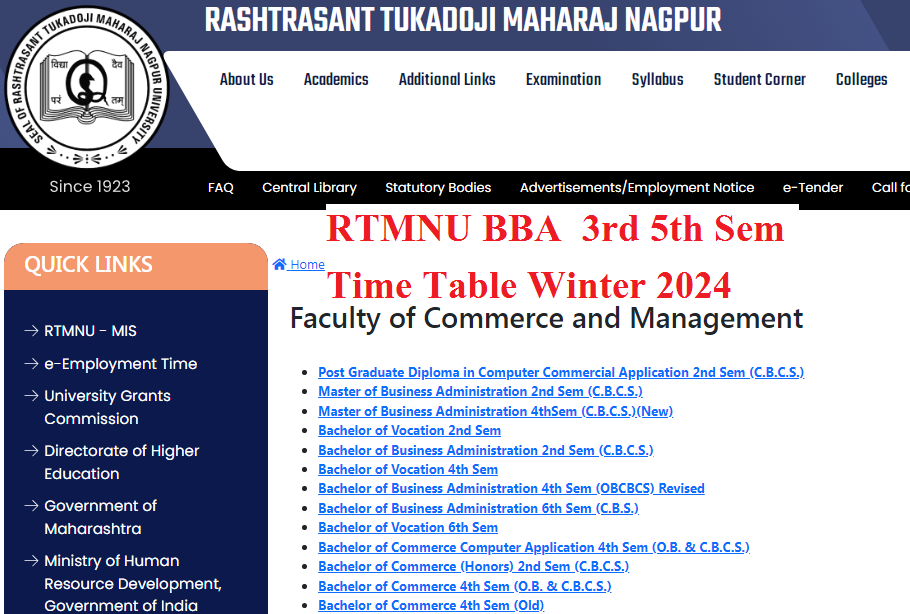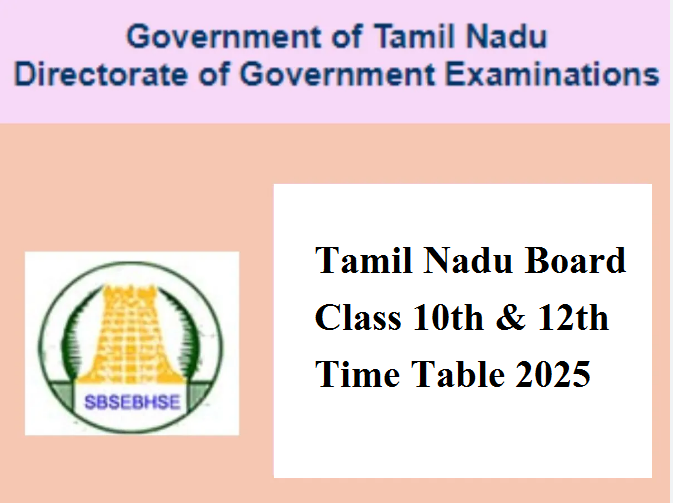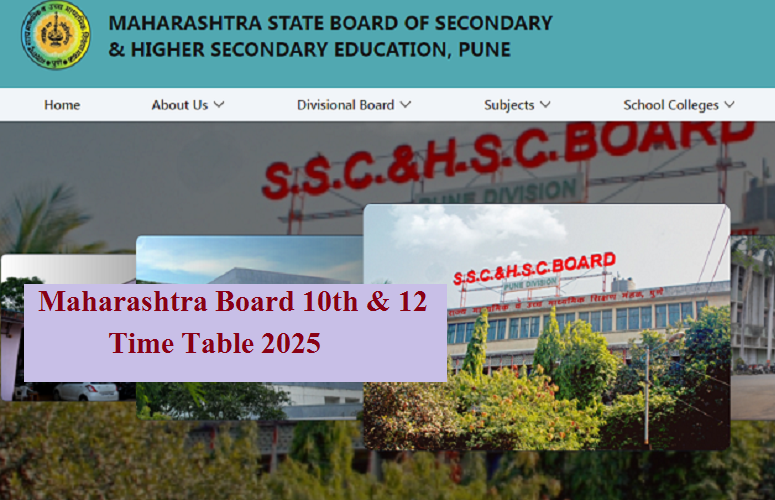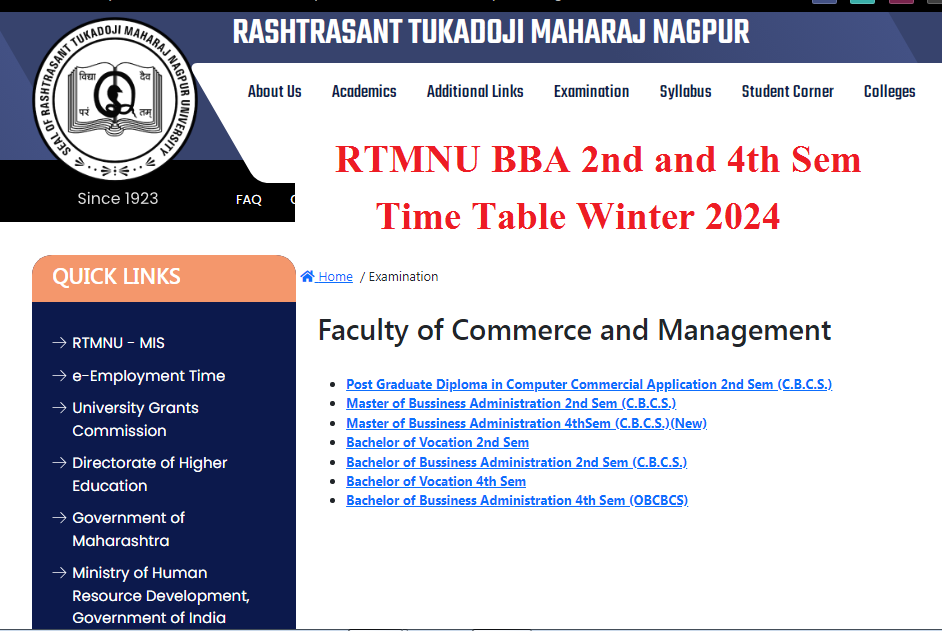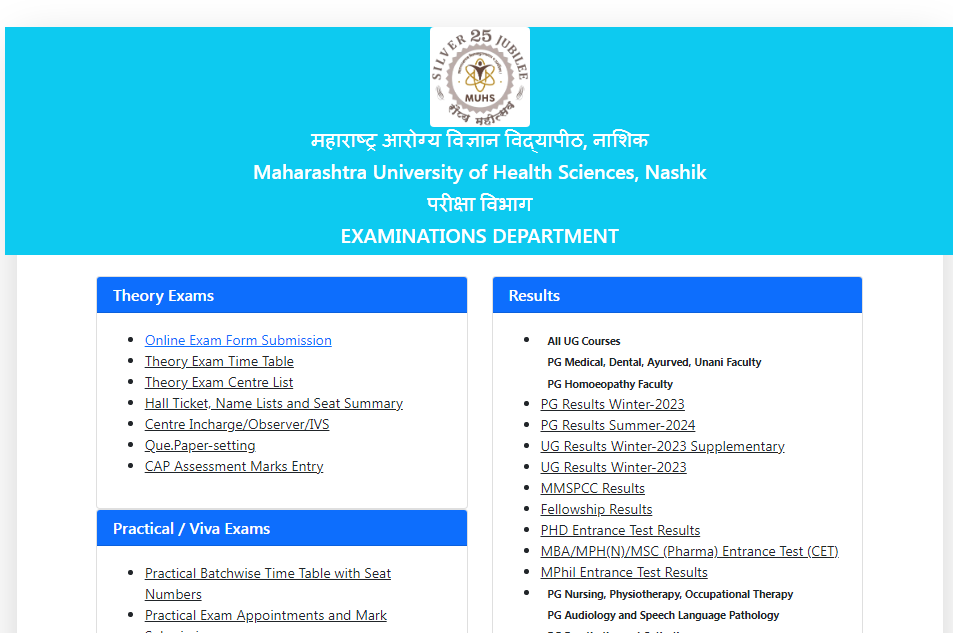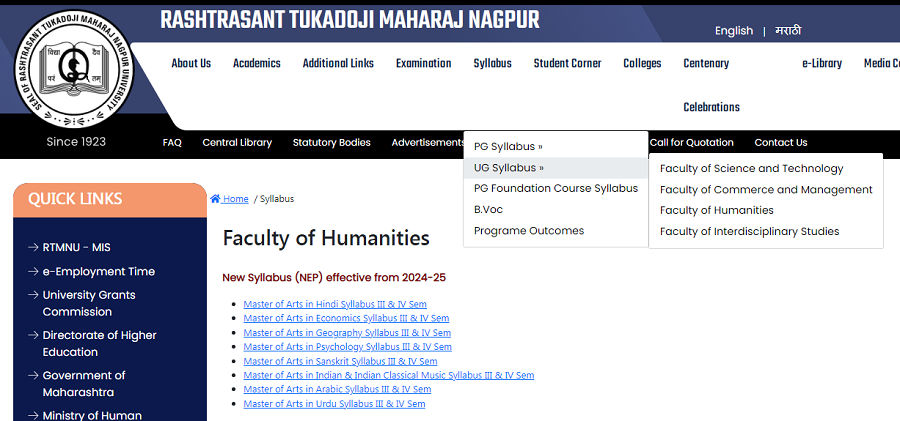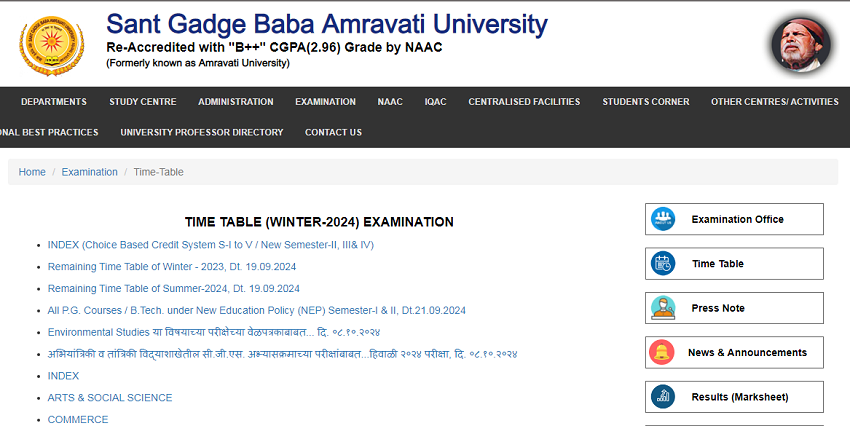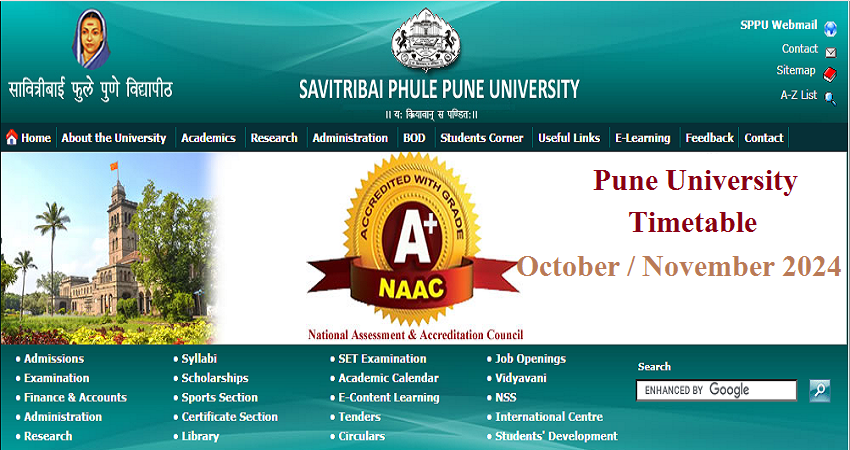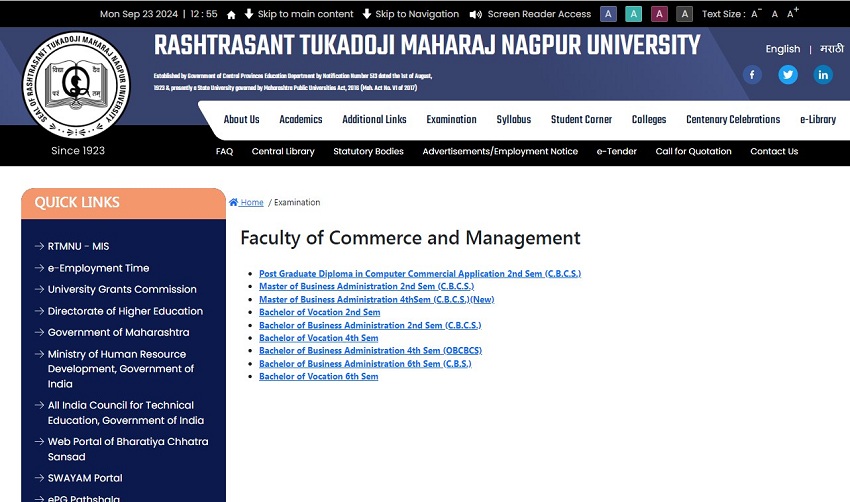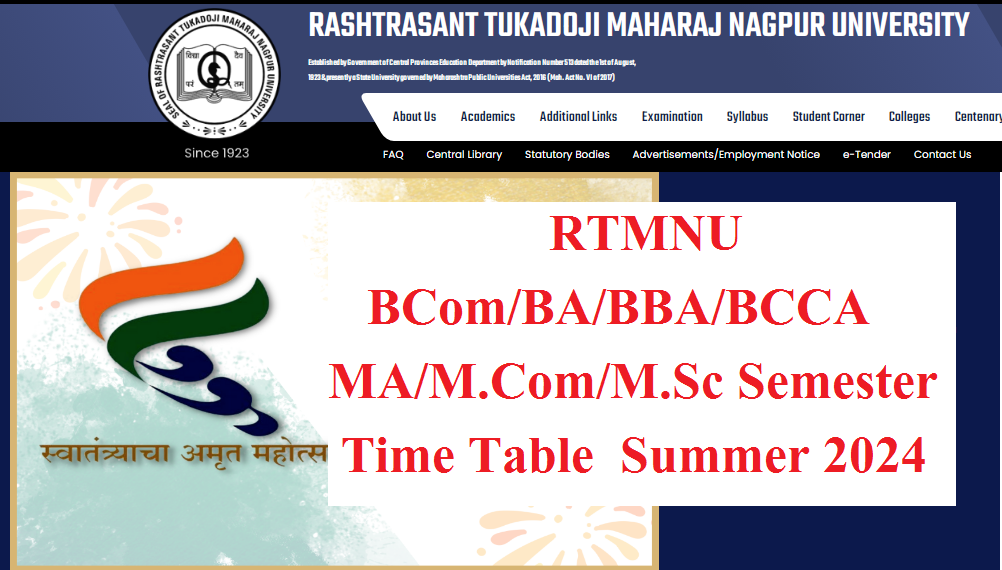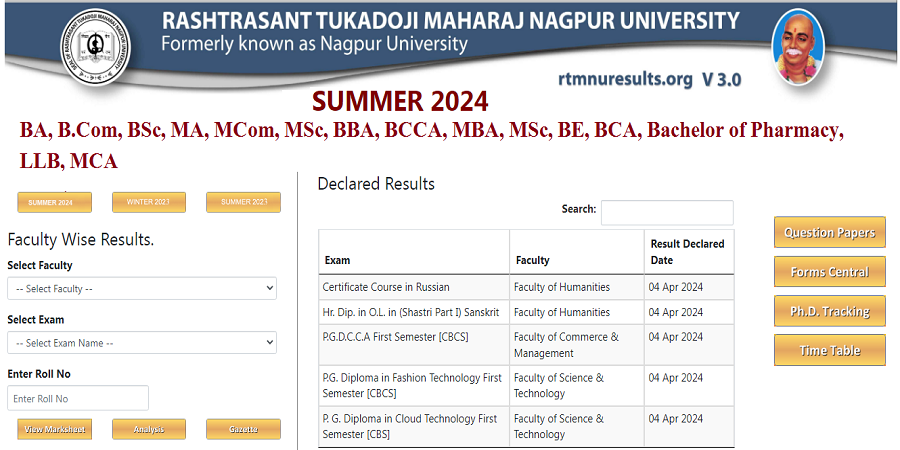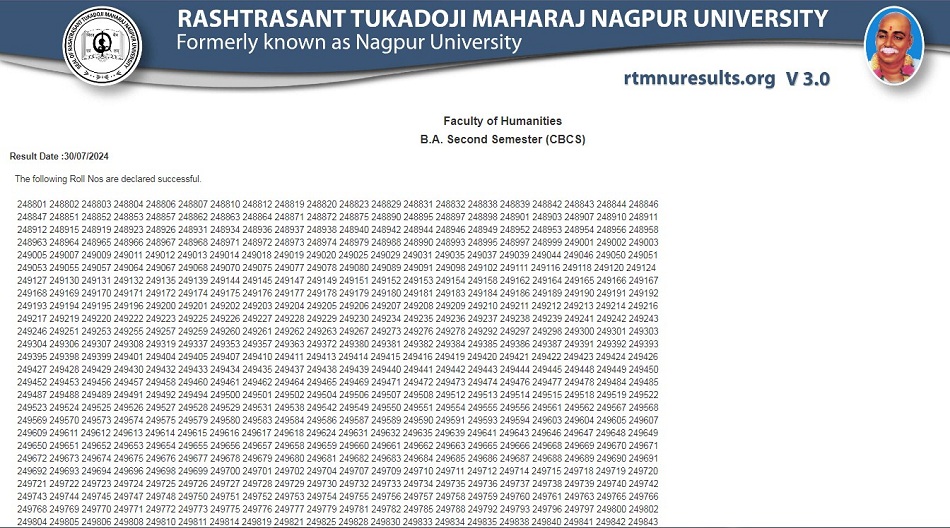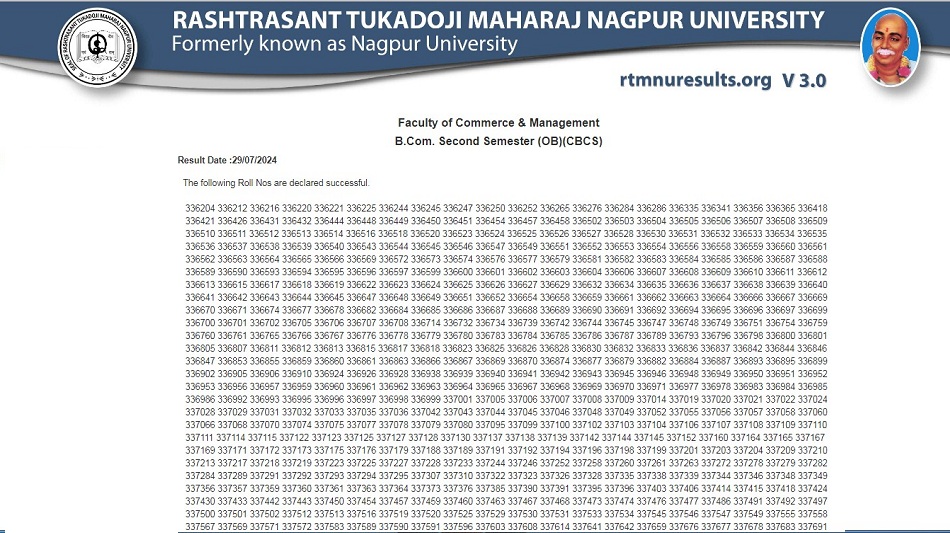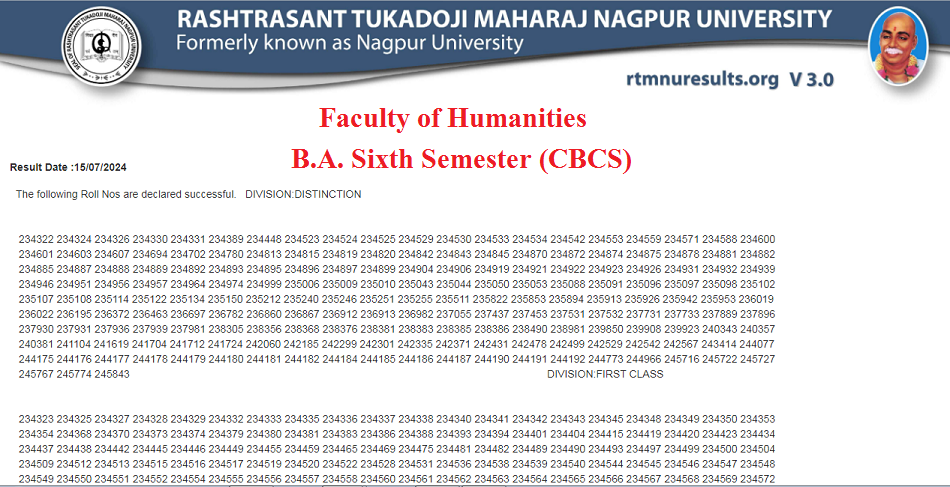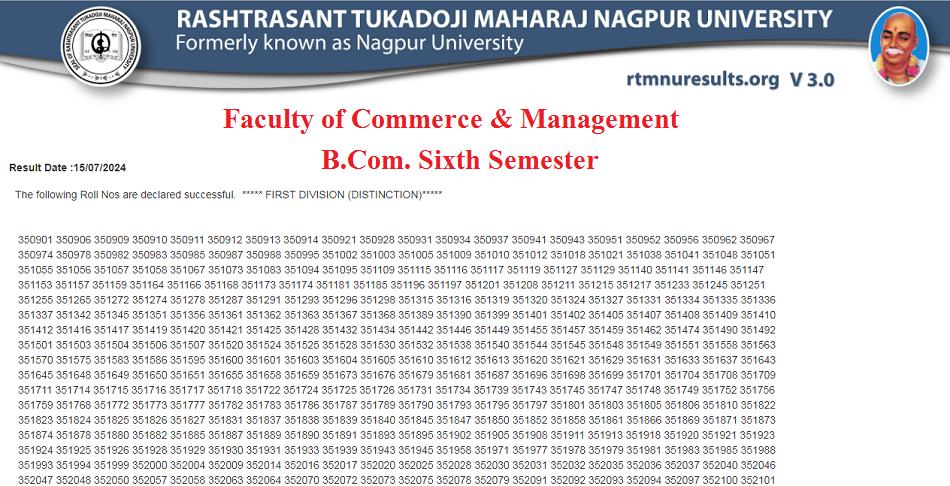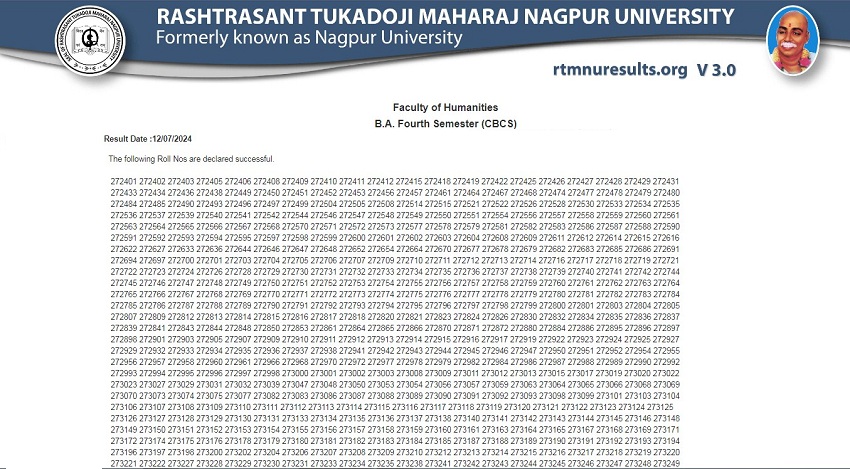RTMNU Revised BSc Microbiology Sem 2 Syllabus 2021
RTMNU Revised BSc Microbiology Sem 2 Syllabus 2021
RTMNU BSc Microbiology Revised Sem 2 Syllabus 2020-21 | Nagpur University B.Sc Microbiology Syllabus Part 1 | RTMNU First Year B.Sc. Microbiology Syllabus
Nagpur University New Syllabus 2021 is available for Downloading. The latest RTMNU Revised Bsc Microbiology Sem 2 Syllabus 2021 is published by Nagpur University. The students looking for this syllabus can Download the PDF Syllabus from given respective Links. We keep adding More details about this Syllabus on this page. We given below the Details updated new syllabus. Students of RTMNU are requested to go though the detail syllabus. You can also download the PDF of syllabus from given link. For More updates keep visiting us.
RTM Nagpur University Revised B.Sc Microbiology Sem 1 Syllabus 2021 -RTM Nagpur University B.Sc Microbiology Second Semester New Revised Syllabus is given below for Downloading. The students can Download the respective Syllabus from following given details. Just go through the given links & read the given syllabus carefully. Nagpur University First Year New Semester Online Detail syllabus given below.
Syllabus B.Sc. Part- I Microbiology
SEMESTER II
PAPER 1 MICROBIAL DIVERSITY
Unit-I Prokaryotic microbes
1. General characters of a) Proteobacteria, b) Mycoplasma, c) Rickettsia and d) Chlamydia
2. Cyanobacteria: Characteristics of anabena and applications of cyanobacteria
3. Actinomycetes: Characteristics of Streptomyces and their applications
4. Archae bacteria: Types of archae bacteria (Brief description), Methanogenic bacteria and their importance
Unit-II Eukaryotic microbes
1. Fungi and yeast: General characters, Asexual and sexual mode of reproduction,
2. Algae:-General characters and industrially important algal cells
3. Protozoans: General characters and life cycle of Entamoeba histolytica
Unit- III Acellular microbes: Viruses.
1. Discovery of viruses, General structure, symmetry and classification
2. Cultivation, chick embryo & tissue culture method
3. Detection of viral growth
4. T4-Bacteriophages- lytic cycle,
5. Lambda phage- Lysogenic cycle.
Unit-IV Microbial interaction
1. Positive and negative interaction: Commensalism, synergism, syntropism, mutualism, parasitism, predation, antagonism, competition
2. Protist-Protist Interaction: Bdellovibrio
3. Protist-Plant interaction: Root nodule bacteria
4. Protist-Animal interaction: Rumen bacteria, insect midgut bacteria, luminescent bacteria
PAPER II FOOD MICROBIOLOGY & MILK MICROBIOLOGY
Unit-I Spoilage of Food
1. Classification of food on the basis of ease of spoilage
2. Sources of microorganisms in food, microbial load
3. Spoilage of vegetables – factors responsible & types of spoilage.
4. Spoilage of meat & meat products- factors responsible & types of spoilage.
5. Spoilage of canned food – factors responsible & types.
Unit-II Preservation of food & Food borne diseases
1. General principles of food preservation.
2. Preservation by physical methods i) By high temperature- TDP, TDT, Effect of high temperature on food, factors affecting high temperature application. Canning in detail. ii) By low temperature— chilling, freezing, and thawing, factors affecting low temperature, effect of low temperature on food.
3. Preservation by chemical preservatives—Acetates, citric acid, lactic acid, propionates, sorobates, nitrates, salt & sugar. Mode of action, applications
Unit- III Milk Microbiology
1. Composition of milk.
2. Sources of microorganisms in milk.
3. Types of spoilage of milk & milk products.
4. Preservation by high temperature—Pasteurization in detail, UHT, Pasteurization test—Phosphatase test
5. Preservation by low temperature
6. Determining the quality of milk—plate count & MBRT.
7. Production of curd/Dahi & Shrikhand.
8. Production of Cheese—Classification of cheese. Production of Cheddar cheese & cottage cheese
Unit-IV Food Borne Diseases and Food Standards
1. Food Poisoning –food intoxication and food infection
2. Clostridium, Staphylococcal enterotoxic poisoning, and Bacillus cereus food poisoning: organism, source, foods involved, outbreak conditions, effect on human health & prevention
3. Aflatoxin- sources of contamination, foods involved, effect on human health & prevention
4. Introduction to FDA, BIS and FSSAI- objectives and responsibilities
5. Introduction to HACCP
RTMNU Bsc Microbiology Revised Sem 2 Syllabus 2020-21
PRACTICAL
- General guidelines for safety in microbiology laboratory, possible laboratory hazards, safety precautions and disposal of laboratory waste and ethics in microbiology.
- Study of permanent slides of special bacteria— Fungi (Aspergillus, Penicillium and Mucor) Protozoa (Plasmodium vivax, Trypanosoma and amoeba) & Algae (Spirullina, Anabena and Euglena), Mycoplasma,
Rickettsia and Chlamydia - Slide culture techniques for the cultivation and study of mould.
- Determining the microbiological quality of food- Total aerobic bacterial count and yeast & mold count by SPC method (Major).
- Coliform detection in food as per BIS.
- Enumeration total aerobic viable count in milk in raw and pasteurized milk by serial dilution method (Major).
- Quality of milk by MBRT.
- Phosphatase test.
- Effect of salt on microbial growth (Major).
- Effect of sugar on microbial growth (Major).
- Determination of TDP & TDT
- Determination of MIC of preservative on test organism (Major).
- Production of curd by using standard lactic culture and determine
acidity.
Books Recommended For RTMNU Revised BSc Microbiology Sem 2 Syllabus 2021
1. Food Microbiology by Frazier 5th ed
2. Modern Food Microbiology by James Jay 6th ed
3. Applied Dairy Microbiology by Martha & Steele
4. Prescott, Hurley. Klein-Microbiology, 7th edition, International edition, McGraw Hill.
5. Kathleen Park Talaro & Arthur Talaro- Foundations in Microbiology International edition 2002,|McGraw Hill.
6. William C. Frazier, Dennis C. Westhoff, N. M. Vanitha (2013). Food Microbiology, 5thEdn. McGraw-Hill Education (India).
7. Banwart G. J. (1989). Basic Food microbiology, 2nd Edn. Chapman and Hall. International Thompson Publishing.
8. Michael T. Madigan & J.M. Martin, Brock Biology of Microorganisms 12thEd. International edition 2006, Pearson Prentice Hall.
9. Stanier. Ingrahametal,General Microbiology 4th&5th Ed.1987,Macmillan Education Ltd
10. Microbiology TMH 5th Edition by Michael J.Pelczar Jr., E.C.S. Chan ,Noel R. Krieg
11. Microbiology An Introduction. 6th Edition. Tortora,Funke and Case. AdissonWesley Longman Inc. 1998.
12. BIS standards, FSSAI
13. Outlines of Biochemistry. E.E. Conn &P.K. Stumpf ,G. Bruening, R.N.Doi. 5 Edition, John Wiley and sons
14. Clarence Henry Eckles, Willes Barnes Combs, Harold Macy (1943). Milk and milk products, 4th Ed. Mc Graw-Hill book Company, Incorporated.
15. Sarkar Chatterjee Swagata Food and Microbes, Himalaya Publishing House

